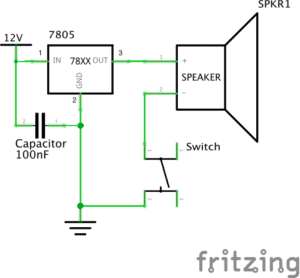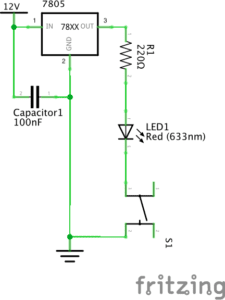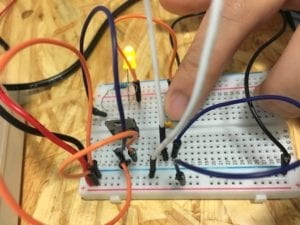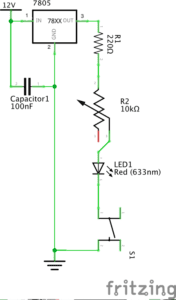For this recitation, my teammate and I made a door bell, a lamp, and a dimmable lamp.
The materials we used in the recitation are:
Resistor: control the flow/current of electricity
LED: light
capacitor: stores electricity
voltage regulator: controls the voltage level
variable resistor: a knob that we can change the flow of electricity.
switch: to turn the circuit on and off
speaker: for the noise
Breadboard: to connect the circuit
Power: to make sure there is powerfor our circuit
For the door bell, the circuit was simple. We built it according to the diagram. However, we weren’t sure which direction is in and out for the voltage regulator, so we tested both ways to see what actually worked. We also found that even if er completed a closed circuit, the lamp still wouldn’t light up. The reason was that the circuit was not closed as we did not connect the negative cable to the ground. The last problem we encountered was that the square shaped switch did not work. After changing the direction of the switch on the breadboard by 90 degrees, our door bell successfully made the noise as we were pressing on it.


Then we built the circuit “lamp” that could light up the LED when we press the button. The circuit was simple and successful. After all the trouble we when through the first e replaced the buzzer with an LED and added a 220ohm resistor, the circuit worked.


For the third circuit “dimming light”, the brightness of the LED would change as we are pressing the button while turning the variable resistor. We added the variable resistor into the circuit as directed. We didn’t encounter too much difficulties.

Question 1:
In the reading, interactivity involves two actors, responding to each other. The circuits we built today were already implemented in our everyday lives that we might not even see them as interactive when used in real life as a door bell or a light. However, they do respond to our touch. The fact that a human could give the machine a command by pressing a button or turning a knob, and the machine could respond with an act of making noise or turning the light on and off, is the sign of interactivity. After building this circuit, the human and the machine could in a way, speak the same language.
Question 2:
In order to make an art interactive, it must produce an output from an input. Just as the wooden mirror example, when a person walked closer to the installation, the installation becomes a mirror. In this interactive art, physical computing and interaction design are inevitable. In Zach Lieberman’s video, he mentioned that the audience could try for themselves how the art installation works. Technology is more and more crucial in contemporary art designs and installations, and interactive art has the power to change the way we live in the future.